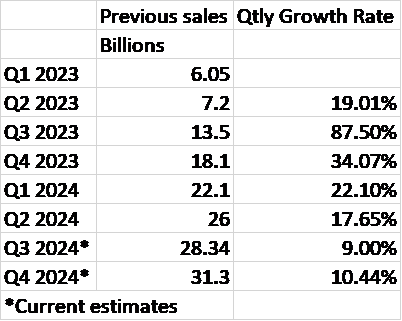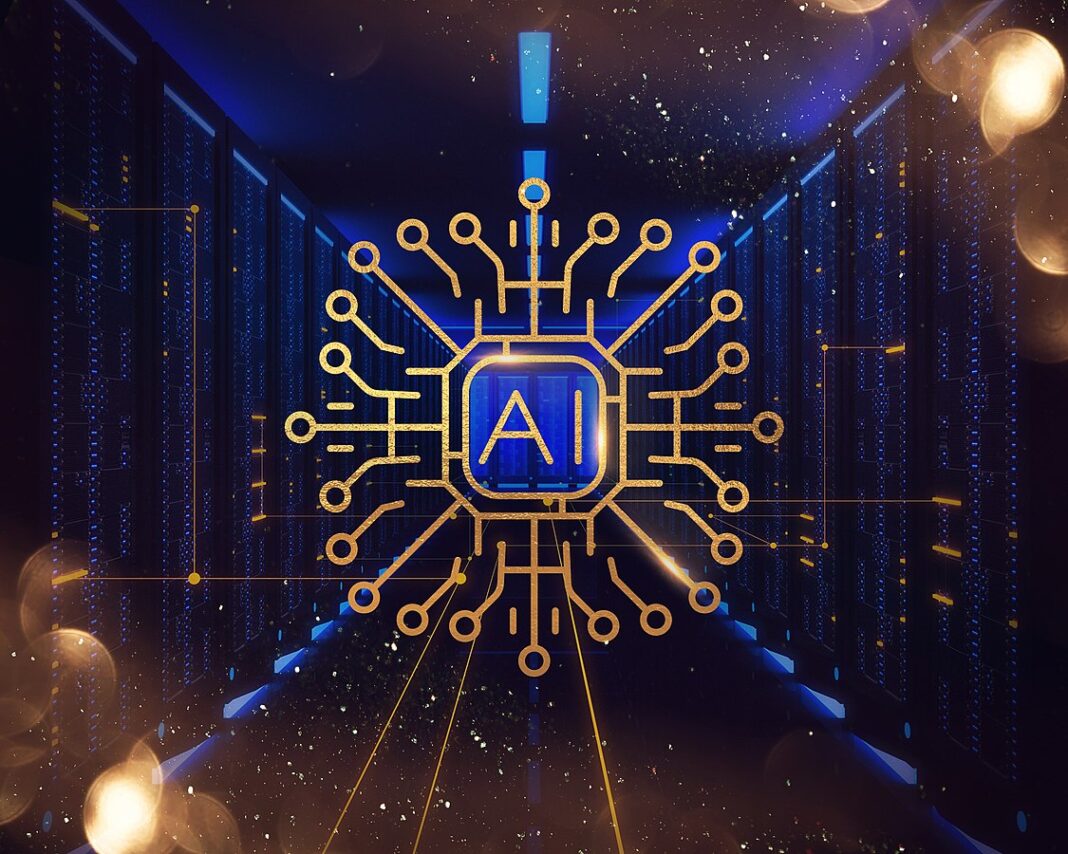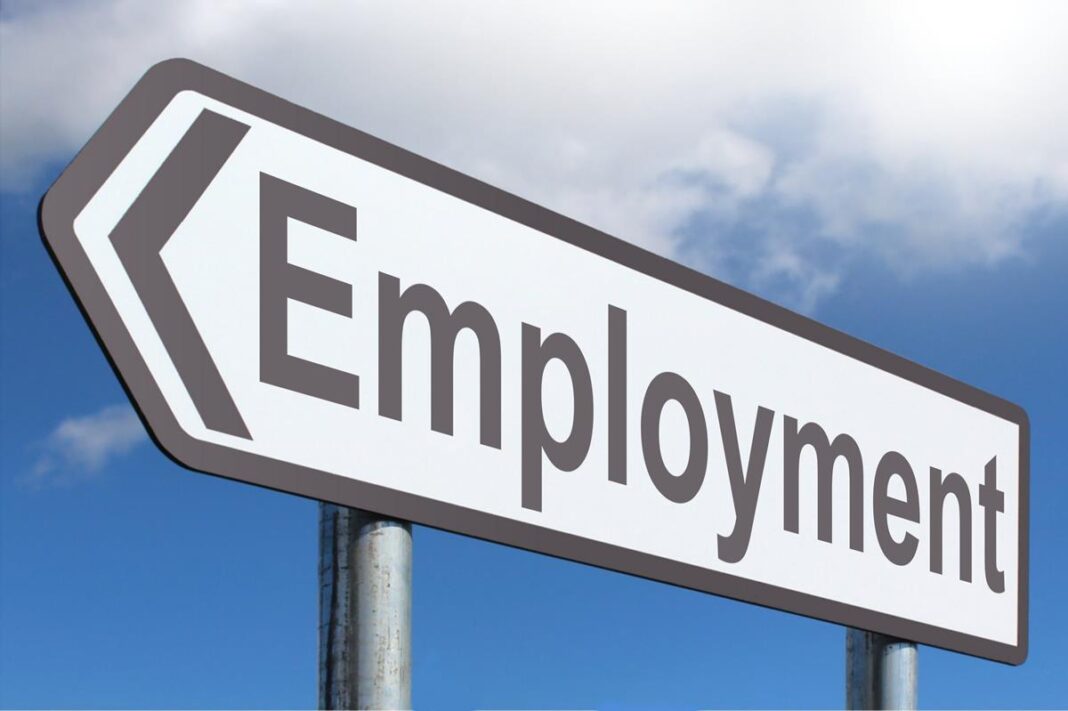This is an excerpt from Yardeni Research Morning Briefing, July 2, 2024.
Determining when an investment trend has run its course is more of an art than a science. While we love the productivity-enhancing possibilities that artificial intelligence (AI) offers, the AI phenomenon has many of the hallmarks of an inflating bubble. There are big bucks chasing the AI dream. New kings of industry have been crowned. And the hyperbole is flowing.
Comment
The publicly traded AI stocks certainly reflect the current hype. Take Nvidia as an example. The stock currently trades for 40 times sales. Not 40 times earnings, 40 times sales. Revenue has been growing rapidly but the quarter to quarter growth rate appears to have peaked 2 quarters ago:

Full year revenue estimates are for a further 30% growth of revenue in 2025. If we assume the company can maintain that growth rate for another 3 years after that to 2028, annual revenue would rise from the current $79.7 billion to $295.9 billion. If the stock price is unchanged over that time the stock would still trade for 10 times sales. For reference, the S&P 500 currently sells for 2.75 times sales. And that is considered expensive compared to history. The average P/S ratio for the S&P 500 over the last 20 years – a period when stocks were not particularly cheap – is 1.7 times. Longer term average is closer to 1 times sales. The ratio had never exceeded 1.5 until the late 90s dot com boom.
Some of the rise in Price/Sales ratios can be justified because the economy has changed over the years. Profit margins are much higher now than they were from the 1950s to the 1990s. But there is a limit to what you can pay for a stock or index before future returns fall to zero or worse. In the case of AI stocks like NVDA, that point has likely already passed.




